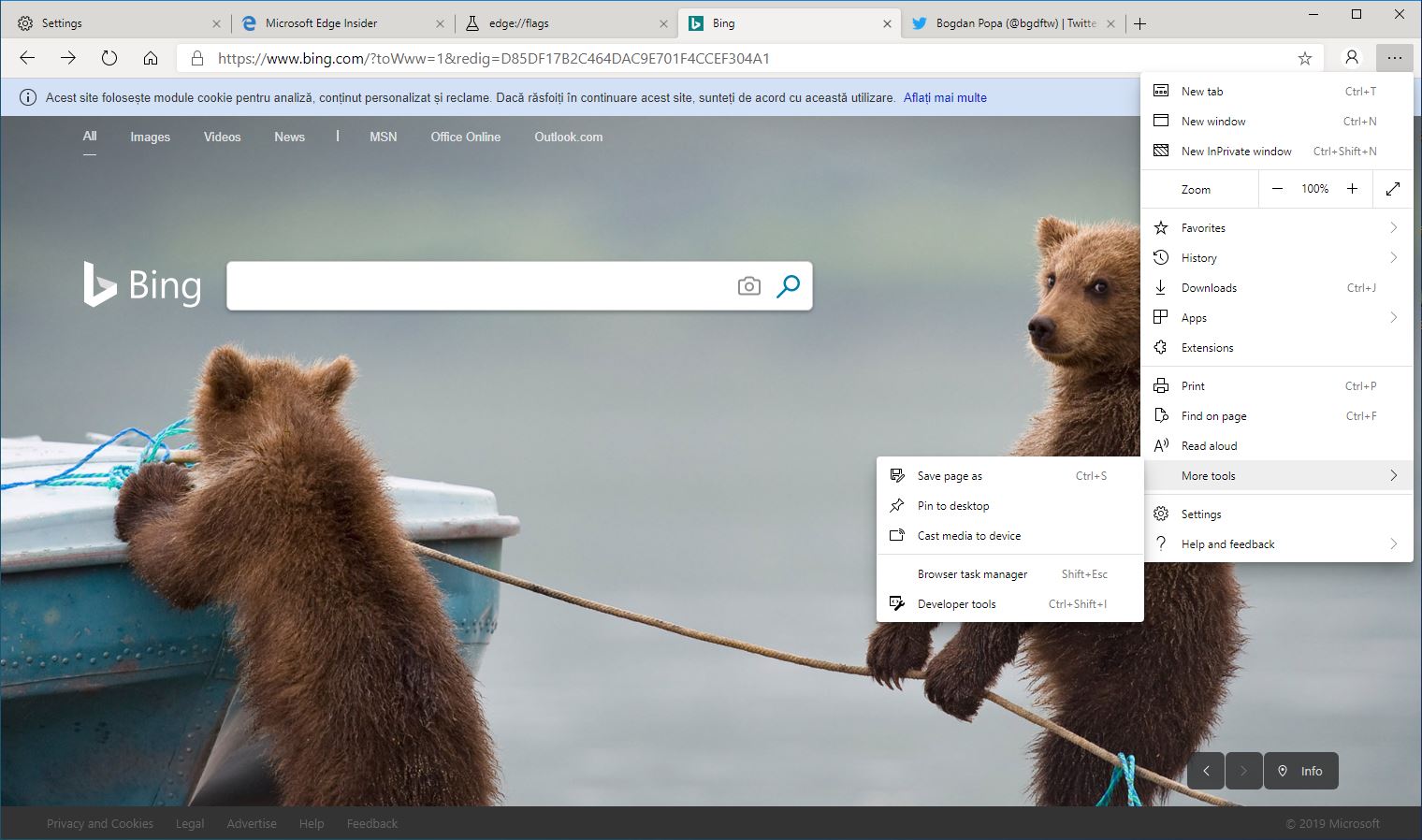The new Microsoft Edge running on Chromium isn’t yet here officially, but a leaked build allows us to try out the browser in anticipation of its highly-anticipated release.
Using the browser on a daily basis isn’t obviously recommended as experimental builds like this can’t by any means become your main driver.
However, Edge seems a really polished browser that runs pretty smoothly, despite several important features still missing. But on the other hand, others are already there, including options to change the user agent if you need it.
Obviously, because Microsoft Edge is migrating from EdgeHTML to Chromium, changing the user agent is a different process now, and those who aren’t used to Google Chrome might find it a really difficult process.
And this happens because changing the user agent isn’t really the most straightforward process, as the option is placed in a menu that few people actually find when looking for it.
For many users, switching to a different user agent and thus emulating another browser is a method to bypass certain website restrictions that concern a specific app. For example, if a website doesn’t support Chromium, you can very well change the user agent to mimic a different browser like Mozilla Firefox.
The best example is Skype for Web, which doesn’t work in Firefox anymore, so Mozilla users need to switch to another user agent to connect to the service.
Interestingly, the Chromium-based Microsoft Edge also comes with a user agent for the original Microsoft Edge that’s still available in the existing Windows 10 builds. This is particularly useful for enterprises which developed internal apps specifically for the native Windows 10 browser.
In other words, switching to the Chromium-powered browser shouldn’t cause compatibility issues and still let your users connect to internal apps.
To change the user agent in the Chromium-powered Microsoft Edge, you first need to launch the Developer tools. This can be done either from the menu > More tools > Developer tools or by simply pressing CTRL + Shift + I when using the browser.
For those unfamiliar with this screen, it’s specifically supposed to provide developers with advanced tools that let them analyze code and website performance. Changing the user agent is actually considered a developer option that helps webmasters check their pages against potential compatibility issues with different browsers.
In the Developer tools menu, look in the upper side of the screen for the three-dot menu that looks like this “…” and then click it. Go to More tools > Network conditions and scroll down to see the lower part of the screen.
By default, Microsoft Edge is configured to Select automatically the user agent, so you need to uncheck this option to be able to choose a custom setting. Uncheck this option and then click the Custom drop-down menu to choose another user agent – you can pick from a wide variety of options, including mobile and desktop browsers.
The browser does not need a reboot to save the new settings, and your pages should then reload to apply the custom user agent.
This method is very similar to the one in Google Chrome, and it makes sense given that the two browsers are now running on the same engine.
Third-party extensions that make it possible to change the user agent faster and easier are also available for both browsers – Microsoft Edge now runs all extensions that were developed for Google Chrome, so you can head over to the Chrome Web Store to install any extension you want. This is actually one of the biggest benefits of Microsoft Edge switching to Chromium.

 14 DAY TRIAL //
14 DAY TRIAL // 



